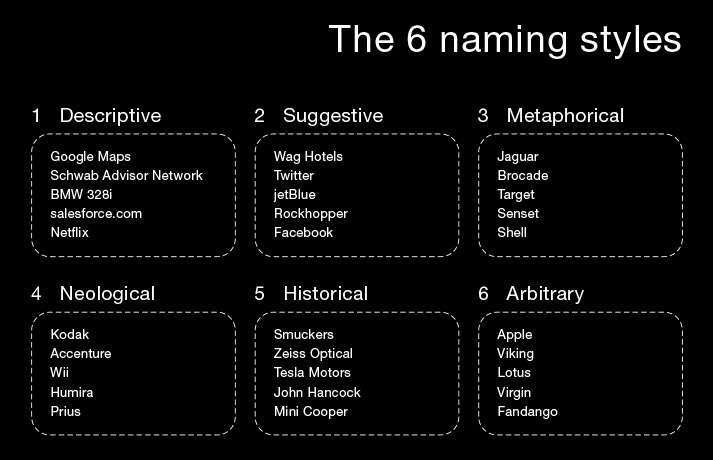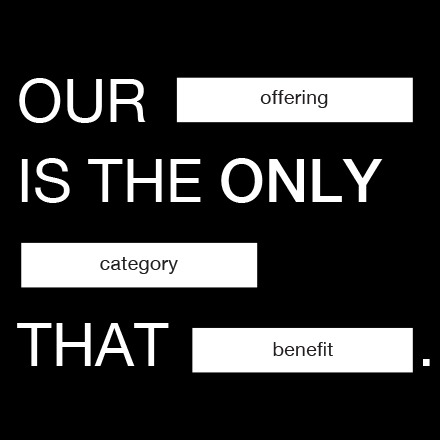Steal This Idea: The 6 naming styles
What kind of name will work hardest for you? Should the name literally describe the offering, or should it suggest a benefit? Is it better to imply an idea, or to invoke a brand’s history? Getting the answer to these questions will help you choose the right name. But before you can do that, you have to know your options.

The 6 naming styles add context so you can see the full landscape of choices. You can use this tool throughout the naming process: analyze the competition, organize your list, or develop more names in a style you hadn’t considered.
Below are the six styles—learn them and you’ll be on your way to winning the naming game.
DESCRIPTIVE
These names literally describe a brand’s offering. Consider a descriptive name when developing a suite of offerings under one larger brand or company name.
SUGGESTIVE
A name is suggestive if it implies a market position (or positioning attribute). This direction allows for more evocative or emotional opportunities.
METAPHORICAL
A metaphor is language that directly compares seemingly unrelated subjects. In naming, it’s a great way to imbue a car brand, for example, with the attributes of an animal.
NEOLOGICAL
Why not create a new word? Another approach is putting together morphemes—the smallest unit of language that carries meaning.
HISTORICAL
If a brand has equity in its heritage, use it. Consider the name of the founder, or the first product ever launched. This method often has great “legs” and allows for meaning to be unpacked for years.
ARBITRARY
These names have almost nothing to do with the brand’s position in the market, nevertheless, people will make meaning of it by connecting your name with what you do. Arbitrary names are among the most legally defensible.

